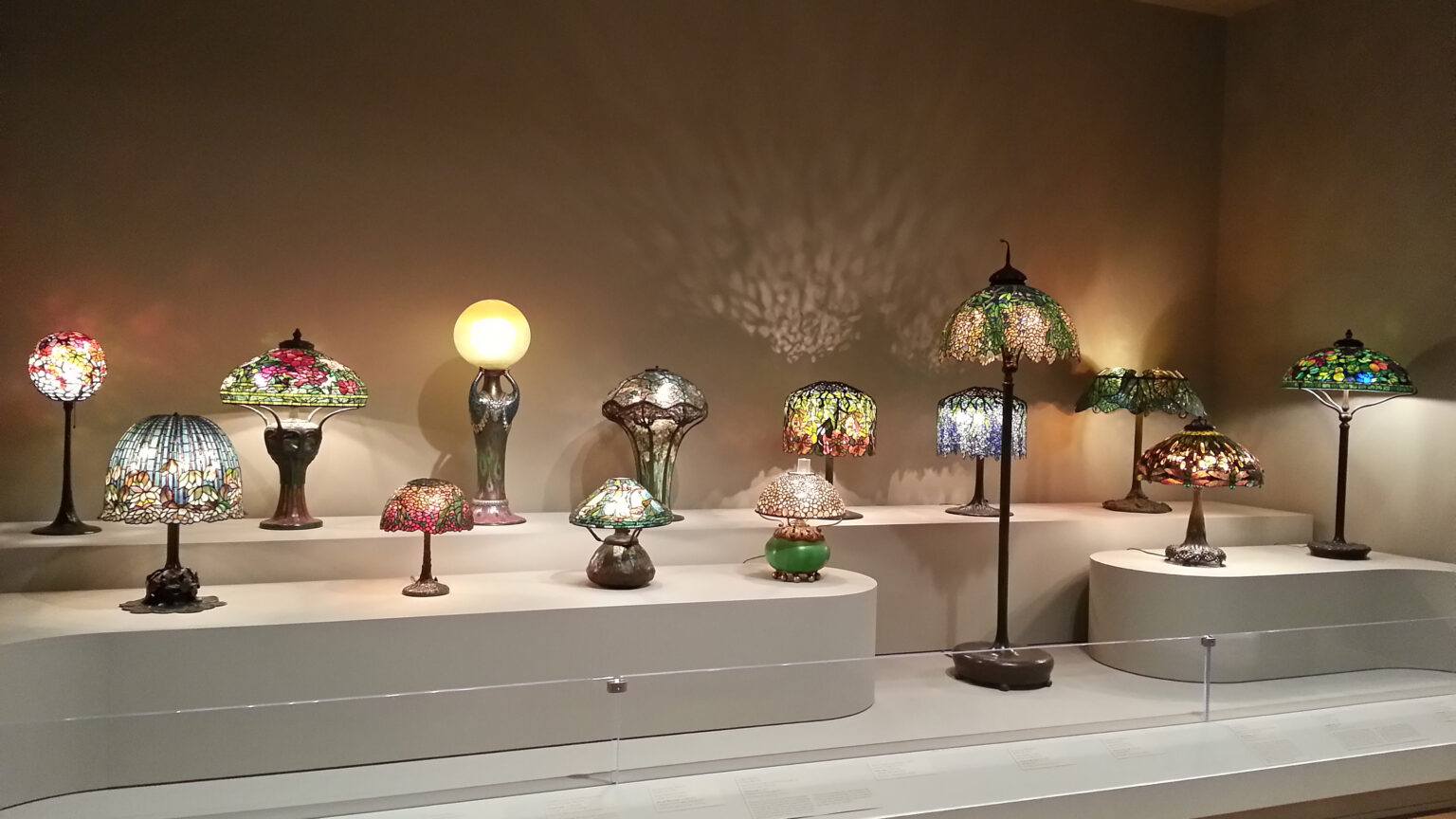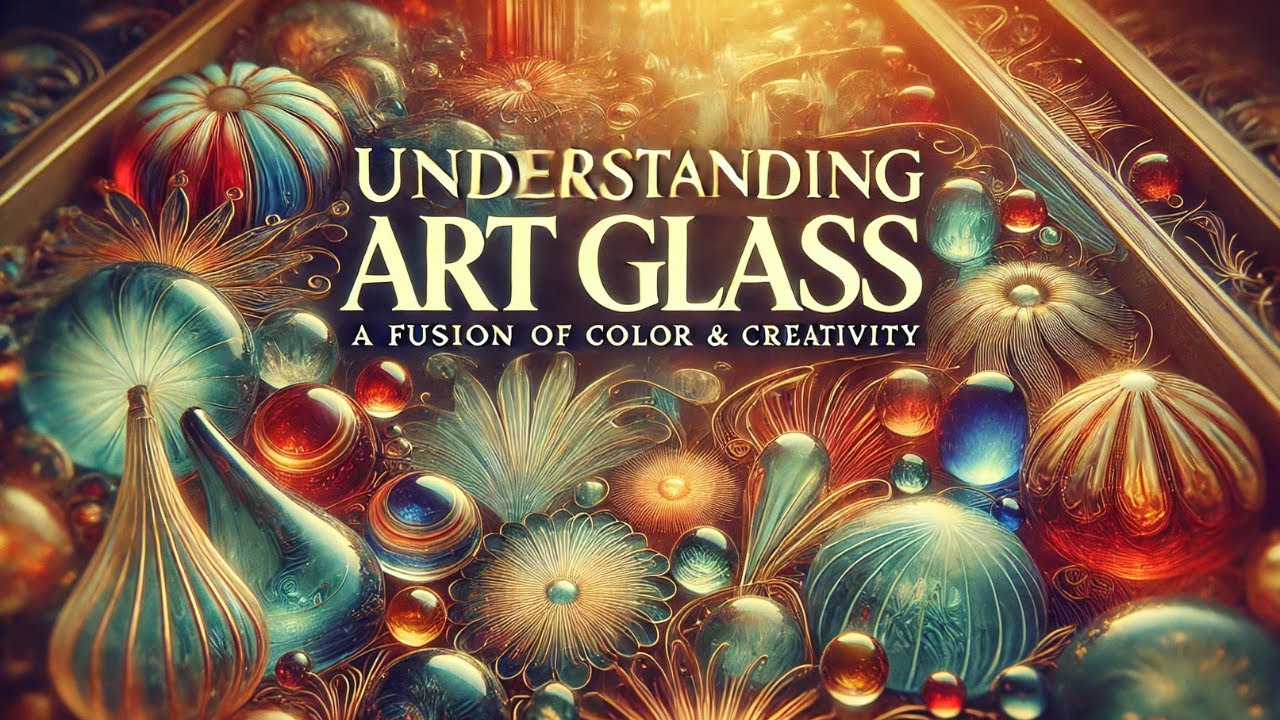Understanding Art Glass: A Fusion of Color and Creativity
Home » Understanding Art Glass: A Fusion of Color and Creativity

Understanding art glass is like unlocking a new level of appreciation for glass as not just a material, but a medium capable of limitless artistry. If you’re just getting started, wow, art glass is simply incredible. The skill and artistry required to create art glass is what sets it apart as a unique material.
But what exactly is art glass? Simple. It is glasswork designed for beauty rather than functionality. Art glass elevates everyday objects into something extraordinary. You see, it’s all about artistic expression and pushing the boundaries of what’s possible with glass. And, trust me, once you get more into it, you’ll start noticing its remarkable presence in places you’ve never paid attention to before.
Two names stand above the rest—Tiffany and Gallé. These artists didn’t just make glass. They changed the game.
How Do They Make art glass?
Art glass is made through a mix of heat, skill, and creativity. It starts with raw materials like silica sand, soda ash, and lime, which get melted in a furnace at over 2,000°F. Once it’s molten, artists shape it using tools like blowpipes, molds, and paddles, adding colors and textures through metal oxides and layering techniques.
From there, the magic happens. Some artists blow glass into delicate forms, while others fuse or cast it into intricate designs. Techniques like stained glass, millefiori, and iridescent finishes give each piece its own unique character. Once shaped, the glass cools slowly in a kiln (a process called annealing) to prevent cracking. It’s a mix of science and artistry that turns sand into stunning, one-of-a-kind pieces.
Delving into the World of Tiffany Glass: Craftsmanship at Its Finest

Louis Comfort Tiffany. What a legend. The name alone screams sophistication and innovation. His glasswork? Unparalleled. The colors, the textures, the unique layering techniques—Tiffany revolutionized glass art like no one before him.
Tiffany glass is instantly recognizable. Vivid blues, deep purples, radiant oranges—his stained glass captures light in ways others could only dream of. He pioneered the favorite glass technique, giving his creations an iridescent, shimmering glow. No two pieces are identical. And as a result, each one is a masterpiece.
His most famous works? Stained-glass windows and intricate lampshades. Museums and private collectors covet them. Today, Tiffany lamps remain the gold standard of decorative glass art. If you find one, treasure it.
The Timeless Appeal of Gallé Art Glass

Now, let’s talk about Emile Gallé. A true visionary. A pioneer of the Art Nouveau movement, his work is instantly recognizable. Inspired by nature, his designs feature delicate flowers, twisting vines, and intricate landscapes. He didn’t just make glass—he brought nature to life through it.
Gallé perfected cameo glass. This technique involves layering different colored glass and carving intricate designs into them. The result? Stunning depth and texture. His work feels alive.
Collectors worldwide revere Gallé’s glass for its craftsmanship and artistic expression. Owning a Gallé piece isn’t just about having art. It’s about possessing history.
Our Video Of Understanding Art Glass

The Art and Science Behind Art Glass: Techniques and History
Creating art glass is no simple task. It takes skill, patience, and an eye for detail. But how did it all start? The history of art glass dates back centuries, evolving through different cultures and artistic movements.
From ancient Roman glassblowing to the stained-glass windows of Gothic cathedrals, each era has left stained glass, its mark. Techniques like etched glass and layered glass have been refined over the years. Innovation never stops.
Modern glass artist continue to push boundaries and. With new technology, they blend traditional techniques with contemporary designs. Art glass remains as ever.
Ensuring Authenticity: Distinguishing Real from Replica
The art world is full of fakes. Let’s face it—authenticity is everything. So, how do you know if a Tiffany or Gallé piece is genuine? Well, it’s all in the details.
- First, look for signatures. Authentic pieces often bear the artist’s mark, serving as a clear indicator of legitimacy.
- Next, examine the craftsmanship. Real Tiffany and Gallé glass exhibit a level of detail that replicas simply can’t match. The finesse and precision in the design set them apart.
- Additionally, check the provenance. Documentation matters because a genuine history adds value. A well-documented past strengthens authenticity and enhances desirability.
- Thinking about building a collection? Then research is key. Don’t rush the process—take your time. Furthermore, consult experts who can provide valuable insights. And most importantly, trust your instincts; they often lead you in the right direction.
Our Comprehensive Understanding of Art Glass
Understanding art glass is more than admiring pretty pieces. It’s about appreciating history, craftsmanship, and the artists who transformed glass into masterpieces. Tiffany and Gallé set the standard, and their works remain legendary.
Want to add a piece to your collection? Be patient. Be smart. And most of all, enjoy the journey. Because collecting art glass isn’t just a hobby—it’s a passion.
Looking for outstanding art glass to start or expand your collection? Check out our selection at Nostalgia Nook Antiques. You’ll find remarkable pieces that capture the elegance and charm of this timeless art form!
Bonus Content:
This article about understanding art glass was written with the intention of giving you important information and ideas. See more material that we think you’ll like down below.

6 thoughts on “Understanding Art Glass: A Fusion of Color and Creativity”
Hi there!
I truly enjoyed this blog post and gained a deeper appreciation for stained glass artistry. Usually, intricate church windows immediately come to mind, each pane beautifully crafted to tell its own unique story. In today’s world, dominated by technologies like 3-D printing, your post highlights how valuable and captivating handcrafted details still are. There’s something special and authentic about art created with personal touches and skilled labor. Thanks for sharing this thoughtful piece!
Hey, Godwin.
I’m glad you liked the article. I grew up going to church every Sunday and was always amazed at the glass. But I was young and didn’t really appreciate it. The actual artwork of Louis Comfort Tiffany (whatta name) makes me want to go out and buy a Tiffany pool table lamp, and I don’t even own a pool table.
This article offers a captivating deep dive into art glass, transforming what might seem like a mere craft into a living, breathing art form. It really got me thinking about how the legacy of artists like Tiffany and Gallé isn’t just about aesthetics but about a rich history of innovation and creative expression. The explanation of techniques and the delicate balance between science and art makes me appreciate how art glass can elevate everyday objects into treasures. What’s one piece of art glass or a glass technique that’s sparked your imagination lately?
Greetings, Mr. Maxwell. Thanks for the great comment. How do they come up with this stuff? Well, the Egyptians did, and the glass is made with a special type of sand. Makes sense, right? My friend Tina was telling me about how they were moving and dropped a big box of unique types of carnival glass. Busted up everything, and they tossed it out.
Today, they are selling bags of colored glass, molds, torches, and all the tools that you can use to
Create your own. Do you have the time? I don’t. But I hope folks are learning how to continue this art and maybe one day create something special for me. (I have a certain mother-In-law in mind.)
Thanks again, Daniel.
Thank you for sharing this! I had no idea there were so many distinct methods involved in crafting art glass. It’s fascinating how different techniques affect the color and style of each piece, and now I’m definitely feeling inspired to start my own little collection. I love that every creation seems to have its own personality, especially since artists all put their unique spin on the design. Thanks for putting this together. Now I can’t wait to visit local galleries and see more art glass up close!
Me too, Randi. I remember now how many things I didn’t appreciate at the time. Like a glass, a red apple on the teacher’s desk. And, a crystal clear paperweight with a once live caterpillar inside. At the time I thought it was just a way cool paperweight. Today I realize it was a piece made by Emile Galle’. Thanks for the comment.